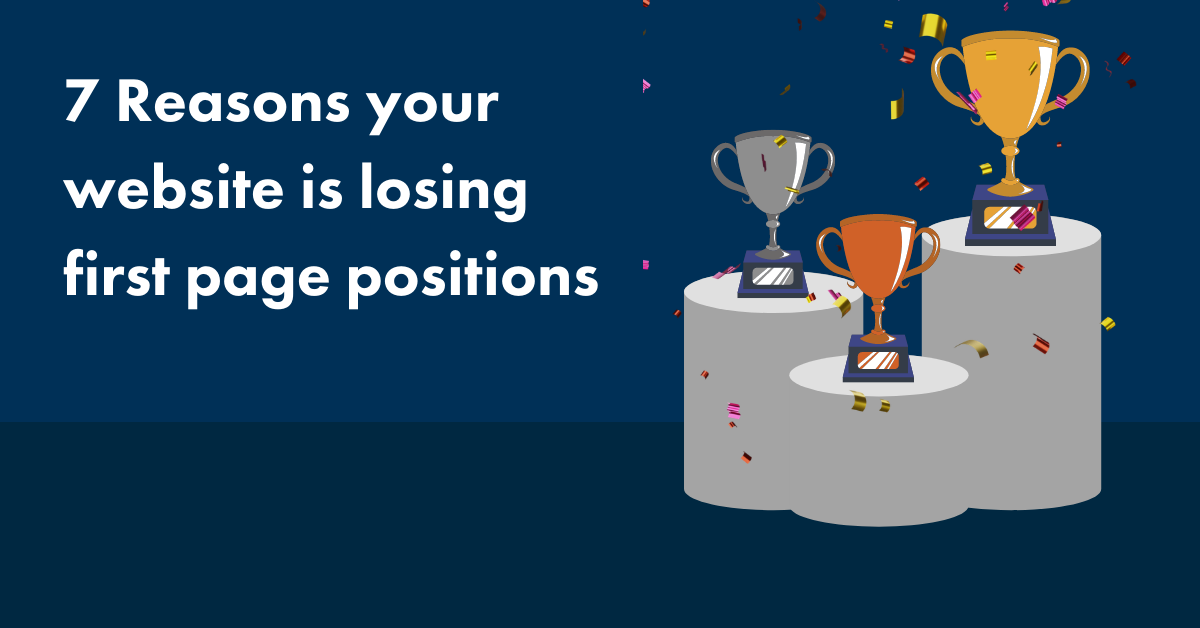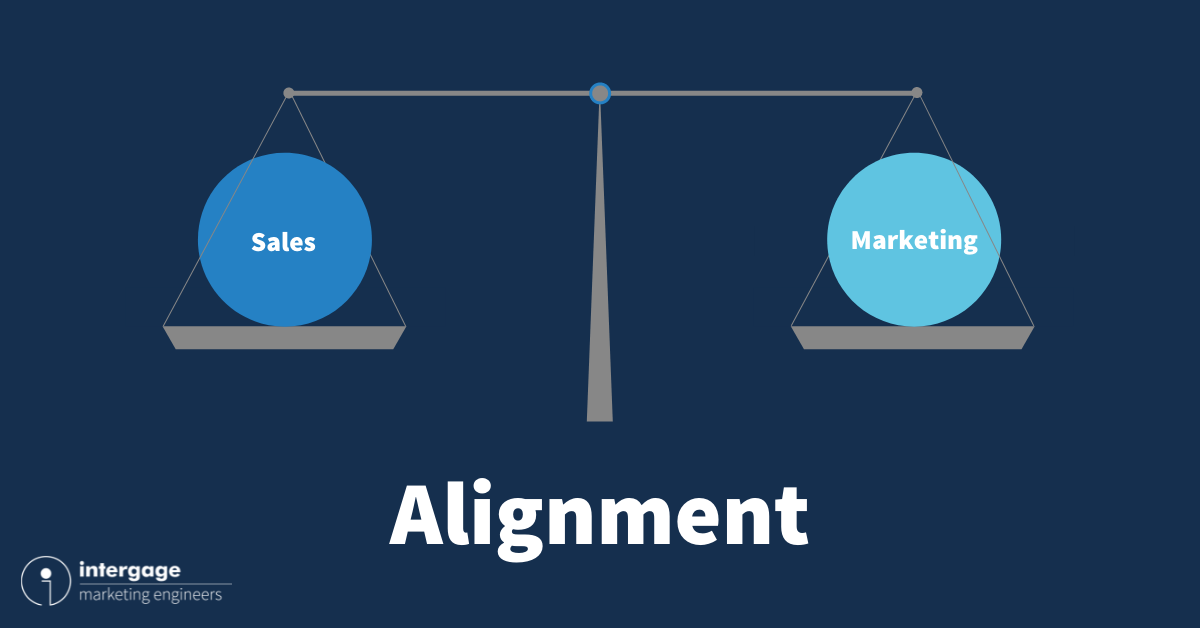Are Poor Website User Journeys Losing You Sales?
A well-designed website allows companies to make a brilliant first impression. A poorly designed website squanders that opportunity.
As harsh as it sounds, those that alienate visitors in the first instance rarely get a second chance to make good. Prospects are unforgiving, particularly when spoilt for choice.
When we refer to ‘well designed websites’ we’re talking not of ambitious animations, funky fonts or crazy colour schemes but rather the user experience.
That’s because structure and ease of navigation hold the key to driving conversions and sales.
Combined with engaging content, an intuitive user journey will always separate a good B2B website from a bad one.
Don’t just take our word for it though. According to HubSpot, 75% of people deemed ‘ease of use’ the most important aspect of a site.
So, what constitutes a bad user journey and how can it impact your bottom line?
Homepage
The ‘blink test’ has proven websites have as little as five seconds to impress an end user upon first load. That’s next to no time and places huge importance on the Homepage itself.
Sadly, too many manufacturing companies buckle under that pressure and set about overselling themselves.
This can lead to crowded pages attempting to showcase literally all products and service offerings, with little in the way of context or distinction.
Rather than impress new prospects this is sure to intimidate and leave them thrashing for the back button.
A good user experience nearly always incorporates white space and adopts the ‘less is more’ maxim.
Any messaging should be succinct and concise, explaining what you do simply and quickly. It should also be outward looking, abandoning industry jargon in favour of language your target audience will understand. Remember, simplicity is key. Find out more about that here.
Visitors should be able to identify who you are, what you do and how you can help them within those all-important five seconds.
Navigation
So, you’ve got their attention but how do you retain it? The answer lies in good navigation.
Top level menus can look confusing, particularly those of the mega variety containing second, third and even fourth levels.

Whether your page structure numbers 7 or 700, clearly signposting where different information can be found is essential. The best menus are intuitive ones that require little to no thought. Categorising a blog under the Media heading for instance makes perfect sense. Placing it under Downloads, less so.
This is doubly important when it comes to products and contact forms, both of which should be easily uncovered if you hope to increase conversions through them.
User testing creates distance between those building the site and those likely to use it, revealing dead ends unforeseen to project managers and developers.
Sadly, E-Consultancy found that 55% of companies conduct no such tests. They risk forcing visitors to do the work, a costly mistake.
Remember your website isn’t for you. It’s for your customers – so it’s their opinion that matters!
Load Speeds
As we’ve already touched upon, time is of the essence.
End users are simply not prepared to wait around for your content to load. Why would they when a competitor’s is just a few clicks away?
Slow load speeds undermine the overall user journey and experience of a website.
Monitoring yours by tapping into helpful tools such as Google’s Search Console and Lighthouse Reports will remove any danger of impatience.
Addressing energy sapping items like large image files or un-minified CSS will enhance your user experience and increase the chances of capturing a sale.
Responsiveness
Over the course of the last decade mobile traffic has begun to usurp the desktop equivalent, changing the digital landscape as we know it.
Any company hoping to win sales simply has to meet that audience halfway.
This necessitates designing upwards to cater for the mobile user experience often resulting in reconfigured pages and navigation and maybe even less in the way of content.
It’s also crucial to ensure that responsive websites aren’t broken by menus that are too large, iframes or non-responsive videos.
With Google now ranking sites mobile first, it will become harder to drive traffic to non-responsive websites. The precious few that do make their way to one will almost certainly perform an about turn.
Value
While your end goal may well be securing sales through your website, attempting to accelerate the process is not always wise.
Plastering your site with sales messaging can appear distasteful and off-putting. The buyer journey clearly depicts how prospects progress between awareness and consideration stages before any decision is made on a purchase.
A good user journey will provide value at each of those junctures and earn loyalty points in the process. There won’t be pressure to buy or arrogant sales messages. Just valuable, relevant content. At every stage.
Gated Content
A good user journey can often be defined as a frictionless one.
This sparks debate around the inclusion of gated content. While it’s beneficial for companies to acquire contact information in exchange for a downloadable resource, it’s not always an attractive proposition for the would-be customer themselves.
If you decide to place content behind a contact form you should be confident in its worth. Ask yourself if you’d go through the hassle if something similar is readily available on another website, minus the inconvenience.
The amount of effort to complete that form should also be reflective of the value offered in the content itself. For example, a simple one-page document would be better asking for minimal details such as name and email address. However, you can justify asking for further information for an offer such as a detailed whitepaper with exclusive insights, or a free marketing benchmark report 😉.
Design
Design itself plays an important role in the overall user journey-cum-experience. It is also an incredibly subjective topic so getting the input of your target audience is really key here. Remember, your website is for your customers – not for you!
As established, substance takes precedence over style when you’re hoping to win sales, but unattractive websites can render it meaningless as few will engage with the copy.
Examples of design elements negatively impacting the user experience include poor colour schemes which makes content difficult to read. A white background overlaid with yellow text is a classic example - for all the wrong reasons.
Too many stock images are also a major turn off. While this kind of photography can serve a purpose and plug gaps in your own media, those which scream stock or have been adopted by several of your rivals, reflect badly on the brand.
Be mindful also that imaginative pop-ups may look ‘cool’ but can prove horribly intrusive. They should only be introduced if truly enhancing the user journey.
Impact
The aforementioned are all examples of a bad user journey but how big an impact could this have on your business?
Significantly, damage can extend beyond the financial and into the reputational. It’s not uncommon for those especially perturbed to make their feelings known online. Criticism on the likes of social media can spread like wildfire and seriously hurt your credibility.
A disappointing UX can also disenchant new and loyal customers alike. Just one bad experience can be enough to turn them away from your brand for good.
The Tempkin Group found that just 13% of consumers on the wrong end of a bad consumer experience would buy from the same company again. Can you afford to be blacklisted in that way?
In short, user journeys have never been more important. If yours is complicated or underwhelming this will be born out in a lack of website enquiries. The longer-term impacts however could prove just as damaging.
Want to know how you compare to the rest of the market?
Get a free marketing benchmark report and find out:
- Which activities you are doing well and where improvements are required.
- A breakdown of your SEO, content and social media performance - the three marketing activities that drive the most success in the industrial sector.
- A list of recommendations to improve your marketing performance and boost growth!






